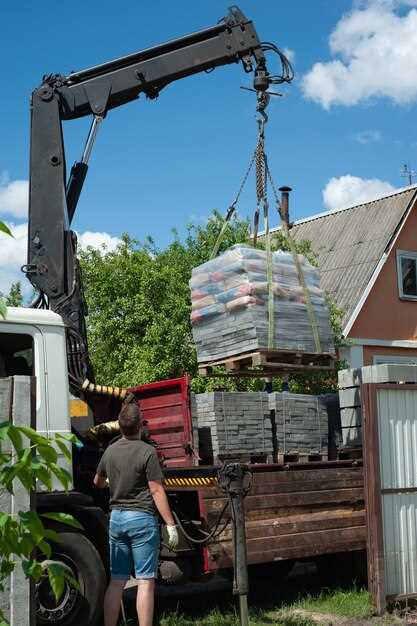
When it comes to repairing your vehicle, sourcing quality parts can often feel like a daunting task. However, salvage yards offer a treasure trove of opportunities for savvy car owners. These facilities not only provide a more affordable alternative to new parts, but they also often stock a wide variety of options that may no longer be available in traditional retail outlets.
Embarking on a search for the right components requires a bit of strategy and knowledge. Understanding what to look for and how to navigate a salvage yard can make the process smoother and more efficient. By learning how to identify quality parts amidst the vast array of used items, you can save both money and time on your next automotive project. Whether you’re a professional mechanic or a DIY enthusiast, mastering the art of finding parts in a salvage yard can be both rewarding and practical.
In this article, we will guide you through the essential steps to streamline your search for quality parts, helping you make informed decisions that result in successful repairs. With the right approach, navigating a salvage yard can transform from a difficult task into an enjoyable exploration of automotive resources.
How to Identify Reliable Salvage Yards for Your Parts Needs

When searching for quality automotive parts, knowing how to identify reliable salvage yards is crucial. Start by researching local junkyards online. Look for reviews and ratings on platforms like Google and Yelp to gauge the experiences of previous customers. A well-reviewed yard often indicates good service and quality parts.
Next, check the inventory of the salvage yards you find. A reputable junkyard should have a wide variety of parts from various vehicles. Visit their website or call ahead to inquire about specific parts you need. This can save you time and ensure they have what you’re looking for.
Another important factor is the organization and cleanliness of the salvage yard. Reliable yards maintain a well-organized facility, making it easier to search for parts. A tidy environment can also suggest that the yard is serious about its business, which often correlates with quality service.
Don’t hesitate to ask about warranties or return policies. A trustworthy salvage yard should offer some form of guarantee on its parts, giving you peace of mind in your purchase. Establish a rapport with the staff; their knowledge and willingness to help can indicate a reliable establishment.
Finally, consider visiting multiple salvage yards. This increases your chances of finding quality parts and allows you to compare prices. Building relationships with different junkyards can also lead to insider advice and recommendations for future needs.
Key Tools and Techniques for Searching Parts in a Junkyard
Searching for quality parts in a junkyard can be a rewarding experience if approached with the right tools and techniques. First and foremost, come prepared with a basic toolkit. Essential items include a socket set, wrenches, pliers, and screwdrivers. These tools will allow you to dismantle parts from vehicles effectively.
Another vital tool is a flashlight. Many junkyards are poorly lit, and having a flashlight can help you locate parts in dark corners or inside vehicles. Additionally, a magnifying glass can assist in examining small components for damage or wear.
Before diving into the search, it’s beneficial to have an idea of what you need. Make a list of required parts based on your project or repair needs. This will keep you focused and ensure that you do not overlook any essential components during your search.
Utilizing a smartphone can enhance your search experience. Use apps or websites that provide information on parts compatibility, prices, and specifications. Take photos of parts you might be interested in during your visit, as they can be useful for comparison later on.
Once you arrive at the junkyard, start by browsing by section. Most yards organize vehicles by make and model, so head to the appropriate section. Pay attention to labels on cars, as they often indicate the type of vehicle and its compatibility with your needs.
Be methodical in your approach. Check vehicles thoroughly, starting from the exterior and moving inside. Inspecting multiple vehicles gives you a better chance of finding the exact part you need. Don’t hesitate to ask yard staff for assistance; they can guide you to sections with specific parts.
Finally, maintain a positive attitude. Searching for parts in a junkyard can sometimes be challenging, but perseverance often leads to finding valuable components at a fraction of the retail price.
Evaluating the Condition and Compatibility of Salvaged Parts

When searching for quality parts at a junkyard, assessing the condition and compatibility of salvaged components is crucial for ensuring longevity and optimal performance. Start by visually inspecting the part for any signs of wear, rust, or damage. Look for cracks, bends, and other physical deformities that could indicate compromised integrity. Pay special attention to critical components such as engine parts, suspension elements, and electrical systems, as these often require higher standards of functionality.
Next, inquire about the history of the part. Knowing how long it has been in use and the specific vehicle model from which it was salvaged can provide insight into its reliability. A part from a vehicle that was well-maintained is likely to be in better condition than one that suffered neglect or abuse.
Compatibility is another essential factor in your evaluation. Ensure that the salvaged part matches your vehicle’s specifications in terms of size, shape, and functionality. This includes checking part numbers and consulting with knowledgeable staff at the junkyard. They can often offer guidance on whether the part will fit your make and model effectively.
Finally, when feasible, consider testing the part before making a purchase. For instance, electrical components can be checked for functionality, while mechanical parts can be evaluated for smooth operation. By taking these steps, you can mitigate the risks associated with buying used parts and improve your chances of a successful salvage yard search.
